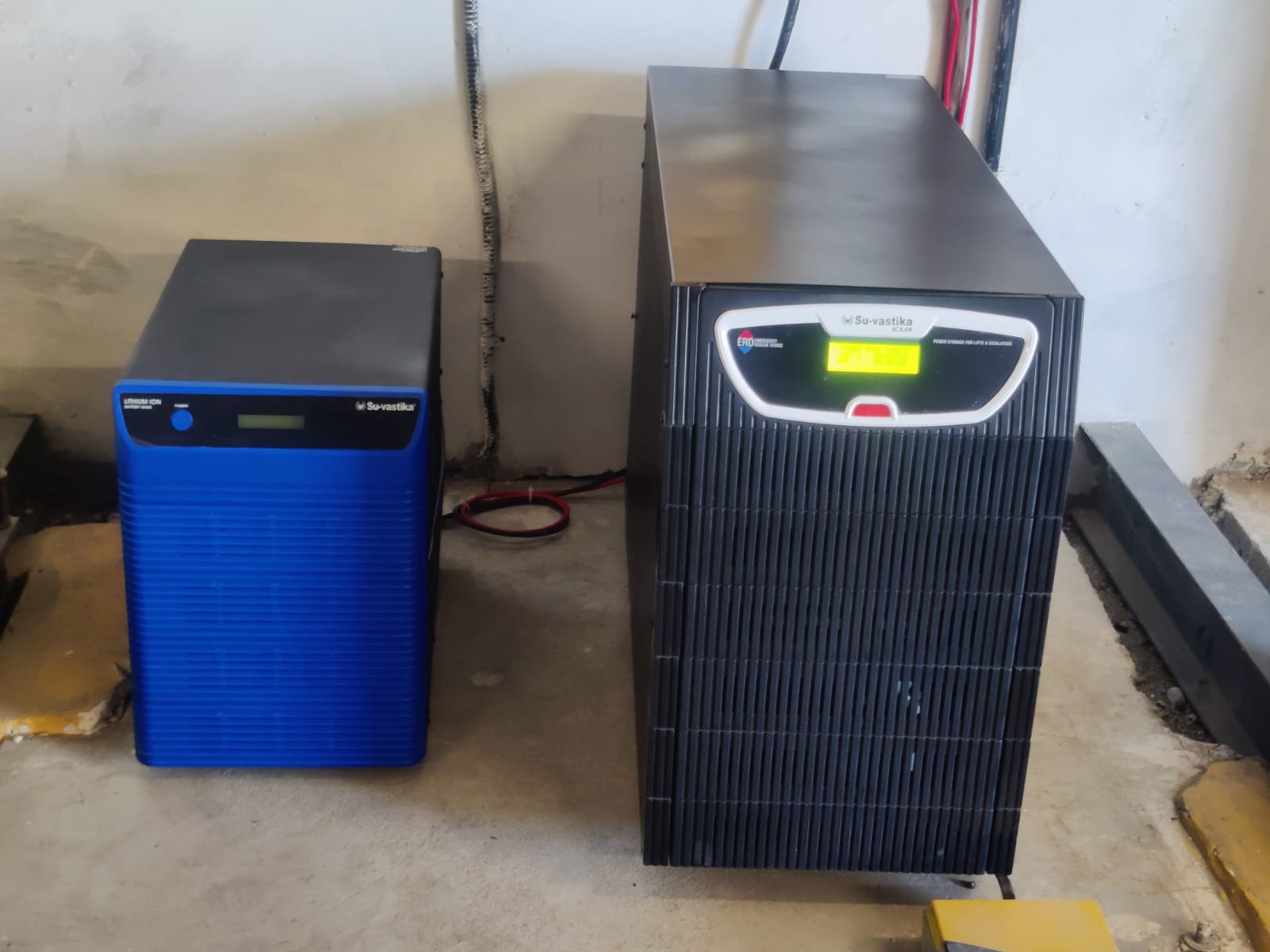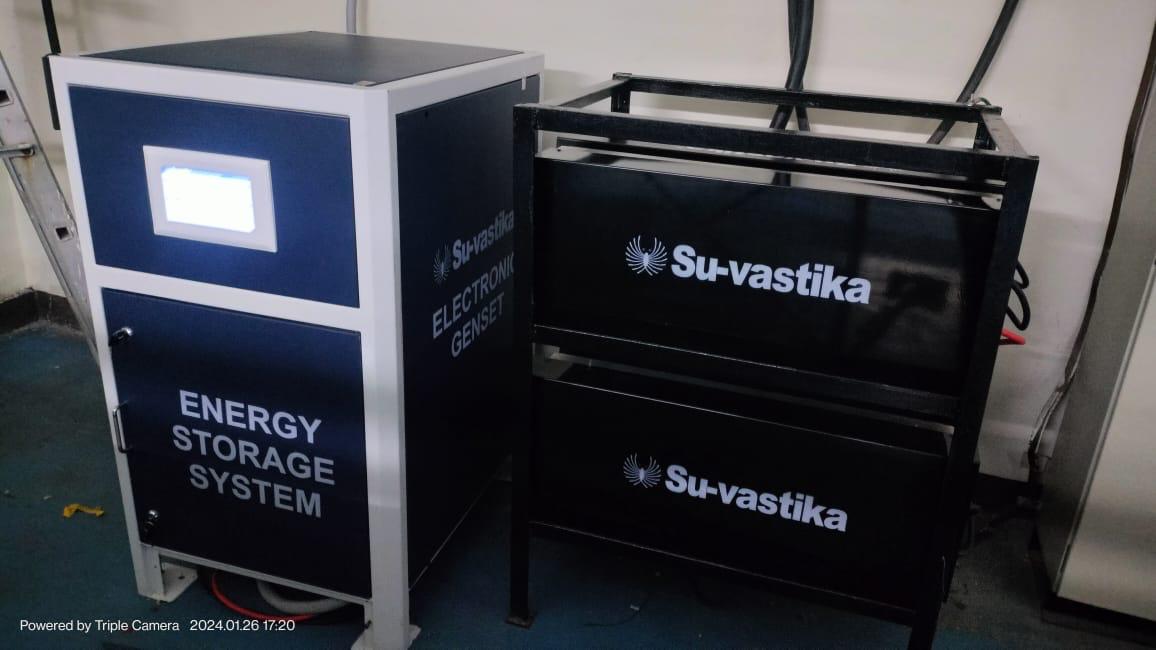
Why is Tubular Battery C20 and C10, and Lithium Battery is C1 Capacity? The answer to this question is that the Tubular Lead Acid battery was designed for smaller loads. As we can see, the C20 is the Battery’s capacity, defined in terms of the discharge current it can take. So C20 battery was meant for discharge of Battery up to 5% discharge from Battery. So let us take the example of a 150 Ah battery. The C20 battery denotes that we can take out 5% of the 150 Ah battery capacity, which is 7.5Amps, which means its meant for running a load of 100 Watts, and if the user uses this for a 100-watt load, then the Battery will last for minimum ten years of life. He will get a 20Hour back up every time he uses the Battery for the 100-watt load. So the life of the Battery will be very good.
The water topping will also be very less, so the Tubular Battery is designed optimally for this 5% load. If we try to discharge this Battery at 10%,20% or 50%, the battery capacity will be reduced. The life will also be reduced, and the water topping will increase.https://electricalacademia.com/batteries/lead-acid-battery-vs-lithium-ion-battery/ In the Inverter/UPS, the user generally considers 600 Watt load capacity a standard capacity. For this kind of load, the Tubular Battery is supposed to provide 600 divided by 12, which comes out to be a 50 Amp discharge current, and if we add the Inverter/UPS efficiency, this comes out to be 52 Amps. The tubular Battery is not designed as the efficiency of a Tubular battery will drop drastically. The Solar industry in Hybrid off-grid and Hybrid Solar PCU came up with another idea of the C10 battery, which was better than the C20 Tubular battery as the Solar Hybrid PCUs are designed in an old fashion where the charging is done in the Battery through Solar panels and though the grid also that’s why the Solar Hybrid PCU is called. In solar Hybrid PCU, the Battery is charged and discharged daily.
Hence, the C20 battery has a very limited life as the discharge from the Tubular Battery is higher, so few manufacturers introduced the C10 battery concept, which can also not give life to the people in Solar set up as the discharge current is increasing in the solar set up people are installing so the C10 Tubular battery is meant for 15 Amp discharge in 150 Ah battery which means if the user runs 200 Waqt load on a single Tubular battery than it might give him 7 to 10 years life. Still, the user uses the same Battery for 600 Watts to 1000 watts, and now the Battery demands water topping. The backup time is also reduced, and the life a user can get is 2 to 3 years only. That too the battery life start reducing in 2 years only, and in next one year, it deteriorates. There is a big misnomer in the market that Solar system battery life is higher than inverter/UPS, which is another way around. One can have a better life on Inverter/UPS, but on a solar System, the Tubular battery life is reduced as the Battery is charged and discharged daily. The cycles are reduced accordingly, and in inverter/UPS usage, the Battery is only discharged when the power fails, which is much less compared to the Solar Battery, which discharges almost daily if the sun is available to give the backup even if the power is available.https://suvastika.com/difference-between-c20-and-c10-tubular-battery/
So let us talk about the Lithium battery. All the Lithium batteries of different chemistries, like Lithium ion, Lithium Iron, Phosphate, lithium zinc etc., have C1 and C3 capacities, and even they are available in C10 capacities. So this is an ideal battery for Solar and the Inverter/UPS application. If we use a 150 Ah Lithium battery for Inverter/UPS or Solar application, then on the 50 Amp discharge, we get exactly 3 hours of backup. In contrast, if we take a Tubular Battery of 150 Ah, we will get only 1 hour 30 minutes. Suppose we discharge the Tubular battery at 75 Amps. In that case, we will get only 45 minutes on 750 Watt bulb load, whereas, in the Lithium battery, there is no degradation in backup time on 75 Amps discharge, giving exactly 2 hours of backup. Not only backup time life of the Tubular battery will also reduce if we discharge the Tubular battery at 50 Amps. If we discharge the Tubular battery at 75 Amps, then the life of the battery will remain only 50%. The tubular battery of 150 Ah is designed for 7.5 Amp discharge, and we are discharging 75 Amps out of the same battery.
In the case a Lithium battery, this battery is designed for a Higher discharge rate, so the life is four times of a tubular battery, and if we load it at 100% of its capacity, the life and backup time are not affected at all. So I leave it to your judgement to decide which one to Choose, Tubular C20, C10 or Lithium C1 battery.
If you compare the backup time chart and the lifetime of the Tubular and Lithium batteries, you will realize Lithium battery is cheaper than the Tubular Battery.
https://inverterindia.com/wp-admin/post.php?post=762&action=edit






